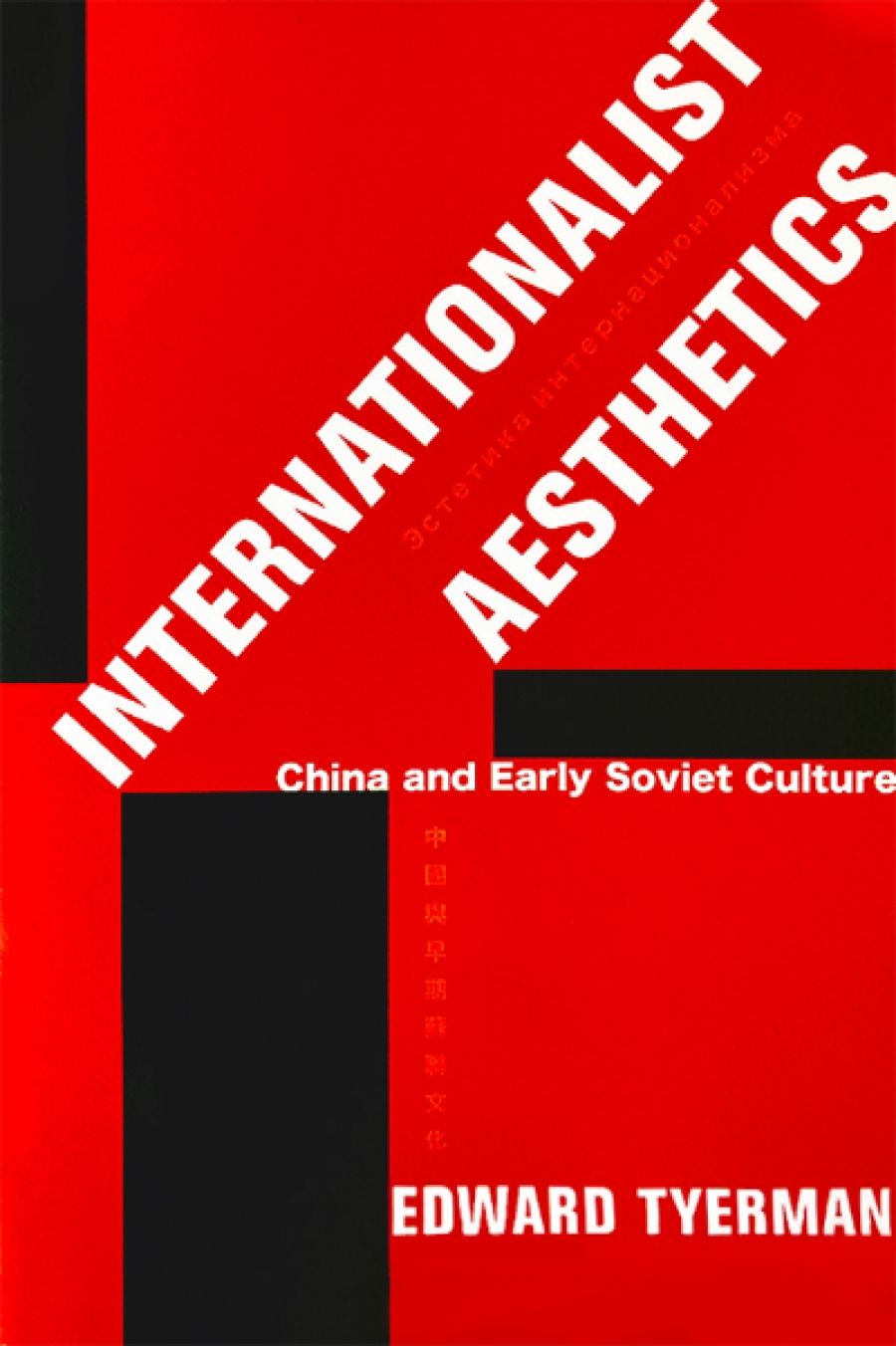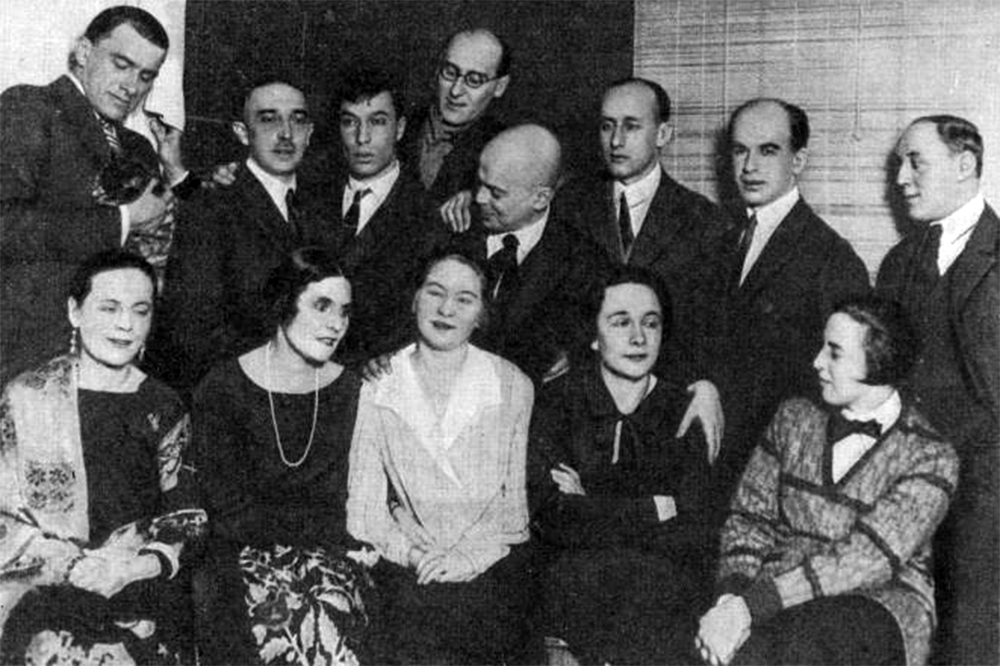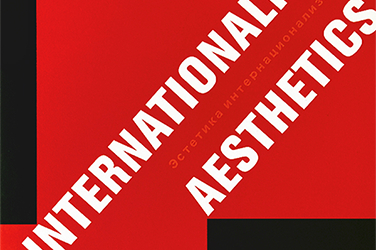
- Free Article: No
- Contents Category: China
- Review Article: Yes
- Article Title: Roar, China!
- Article Subtitle: Sino-Soviet creative convergence
- Online Only: No
- Custom Highlight Text:
‘We are drawn to this China, even though we still do not know China,’ wrote Soviet avant-garde writer and theorist Sergei Tretyakov in 1925. ‘But we must get to know China, we must get to know it well, and we must get to know it quickly.’ Tretyakov’s call was underpinned by a real sense of political urgency: the failure of socialist revolutions across Europe had prompted a Soviet pivot toward Asia, and China had emerged as a potential partner for fostering ‘an international community of enemies of capital’. Yet despite being geographically adjacent, Russia and China had long perceived each other as unfamiliar and distant. In an effort to bridge this divide, a comprehensive cultural campaign was devised to draw China closer to the Soviet public.
- Article Hero Image (920px wide):

- Article Hero Image Caption: A gathering at the apartment of Mayakovsky and Brikov in Sokolniki, 1925. Standing (left to right): Mayakovsky, Osip Brik, Boris Pasternak, Sergei Tretyakov, Viktor Shklovsky, Lev Grinkrug, O.M. Beskin, P.V. Neznamov. Sitting: Elsa Triolet, Lilya Brik, R.S. Kushner, E.V. Pasternak, Olga Tretyakova. (photograph from Maïakovski by Elsa Triolet (1939)/Wikimedia Commons)
- Alt Tag (Article Hero Image): A gathering at the apartment of Mayakovsky and Brikov in Sokolniki, 1925. Standing (left to right): Mayakovsky, Osip Brik, Boris Pasternak, Sergei Tretyakov, Viktor Shklovsky, Lev Grinkrug, O.M. Beskin, P.V. Neznamov. Sitting: Elsa Triolet, Lilya Brik, R.S. Kushner, E.V. Pasternak, Olga Tretyakova. (photograph from Maïakovski by Elsa Triolet (1939)/Wikimedia Commons)
- Featured Image (400px * 250px):

- Alt Tag (Featured Image): Iva Glisic reviews 'Internationalist Aesthetics: China and early Soviet culture' by Edward Tyerman
- Book 1 Title: Internationalist Aesthetics
- Book 1 Subtitle: China and early Soviet culture
- Book 1 Biblio: Columbia University Press, US$35 pb, 353 pp
- Book 1 Readings Link: booktopia.kh4ffx.net/vn651y
The 1920s would become a decade of intense political and creative engagement between the Soviet Union and China, and these activities are the focus of Edward Tyerman’s excellent Internationalist Aesthetics: China and early Soviet culture. Bringing together a rich collection of texts, films, and stage performances, Tyerman’s study reveals the extraordinary efforts by Soviet and Chinese cultural agents to forge ‘connections of solidarity and common interest’ through art. This engagement, as Tyerman persuasively argues, positioned China at the epicentre of the Soviet mission to establish a new type of political – and aesthetic – internationalism.
Internationalist Aesthetics is structured around four central chapters, each with a specific focus on works of fictional and documentary literature, theatre, and cinema. A large and diverse source base is tied together by the figure of Tretyakov, whom Tyerman heralds as ‘the most prominent cultural mediator of China for a Soviet audience’. Born in Latvia in 1892, Tretyakov spearheaded a series of avant-garde projects from Moscow to Vladivostok in the early 1920s before travelling to China in 1924 to teach Russian literature at Peking University. Tyerman juxtaposes Tretyakov’s work with other examples of Soviet creative production to examine a wide range of aesthetic responses to China, from avant-garde poetry to classical ballet. His engagement with this material also brings to light Soviet efforts to deconstruct the orientalist perception of China as exotic and inferior, and instead present the nation as a revolutionary peer. Ambitious, complex, and skilfully executed, Tyerman’s study is a true journey of discovery.
During the 1920s, Soviet artists found particular inspiration in current events and eyewitness reporting, and the resulting shift from fiction to fact in Soviet creative production is a central feature of Tyerman’s analysis. Internationalist Aesthetics thus opens with consideration of a volume of Tretyakov’s articles on China published in the Soviet press between 1924 and 1928, entitled Chzhungo (a Cyrillic rendering of Zhongguo, or ‘China’), alongside his 1924 poem ‘Roar China’. Chzhungo provides a testing ground for avant-garde experiments with ‘literature of facts’, which rejects fiction and uses exclusively documentary materials as a way to transmit China ‘as it is’. Meanwhile, ‘Roar China’ takes the form of poetic reportage, recording the broad range of trades seen on the streets of Beijing, with Tretyakov drawing on Futurist poetic experiments to transcend the language barrier and make the Chinese working class recognisable to Soviet readers.
A chapter dedicated to theatre centres around a pair of prominent China-themed performances, both inspired by real and widely reported events. Tretyakov’s ‘play-article’ Roar, China! (1926) borrows its title from his earlier poem but explores a 1924 act of British imperial aggression in the Sichuan province. A ‘manifesto for an internationalist form of theater’, Roar, China! comprised a dynamic blend of reportage, historical re-enactment, and ethnographic study that resonated with audiences worldwide. More conventional was the Bolshoi Theatre ballet The Red Poppy (1927), which presented the Chinese anti-colonial struggle in the traditional form of ballet, and through a love story between a Chinese dancer and a Soviet naval captain. Tyerman contrasts these two pieces to explore the rich and complex history of Soviet efforts to present China’s political awakening on stage. His focus on the role of translation in these plays provides further insight into how artistic experiments with language were employed to build the Sino-Soviet connection.
Tretyakov’s assertion that ‘China must be carefully and comprehensively squeezed into the consciousness of the masses through their pupils’ sets the tone for an analysis of various films that cut across a range of genres. Tretyakov’s (unrealised) film trilogy on contemporary China is considered against examples of revolutionary melodrama, expedition film, agitprop, and comedy. In each instance, Tyerman highlights how film was used both to teach the Soviet public about its neighbour, and to introduce Chinese audiences to ‘the ideological power of Soviet cinema’. His compelling analysis will doubtless inspire many to seek out and view these historic films.
Internationalist Aesthetics culminates in a discussion of what Tyerman describes as the most complex early Soviet publication on China: Tretyakov’s text Den Shi-hua, which appeared in instalments before being published as a book in the early 1930s. Defined as a collaborative ‘bio-interview’, this work draws on a series of discussions between Tretyakov and his former student Den Shi-hua, which trace Den’s journey of political awakening from rural Sichuan, to Peking University, and ultimately to Moscow. By highlighting the ways in which Den Shi-hua departs from other contemporary forms of ego-writing, Tyerman celebrates the work as an advanced model for transnational and translingual literary collaboration in which the interviewer, the interviewee, and the reader all play an equal (and emancipatory) role.
Cutting across a range of genres and media, Internationalist Aesthetics brings together cultural history and translation studies to provide fascinating insight into how creative production was used to build understanding between China and the Soviet Union in the 1920s. Although the period of close relations between these two countries ended abruptly in 1927 with the suppression of communist forces in China, the artistic production that supported this rapprochement has lost none of its allure or significance, particularly in the context of contemporary efforts to forge a vision of progressive internationalism fit for our era. In illuminating the work of cultural mediators that shaped this internationalist aesthetic, Tyerman proves an excellent mediator himself, offering a new account of the Sino-Soviet creative convergence that will be highly valued by readers interested in Russian, Chinese, and indeed global history.


Comments powered by CComment